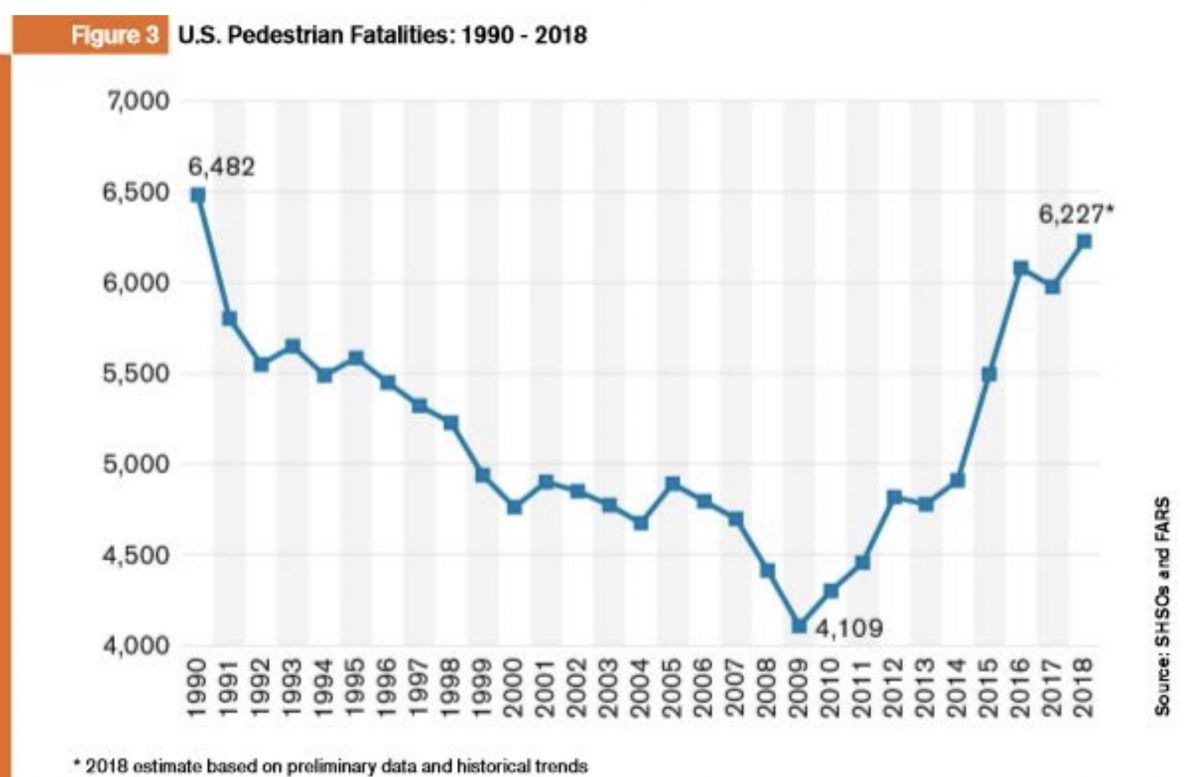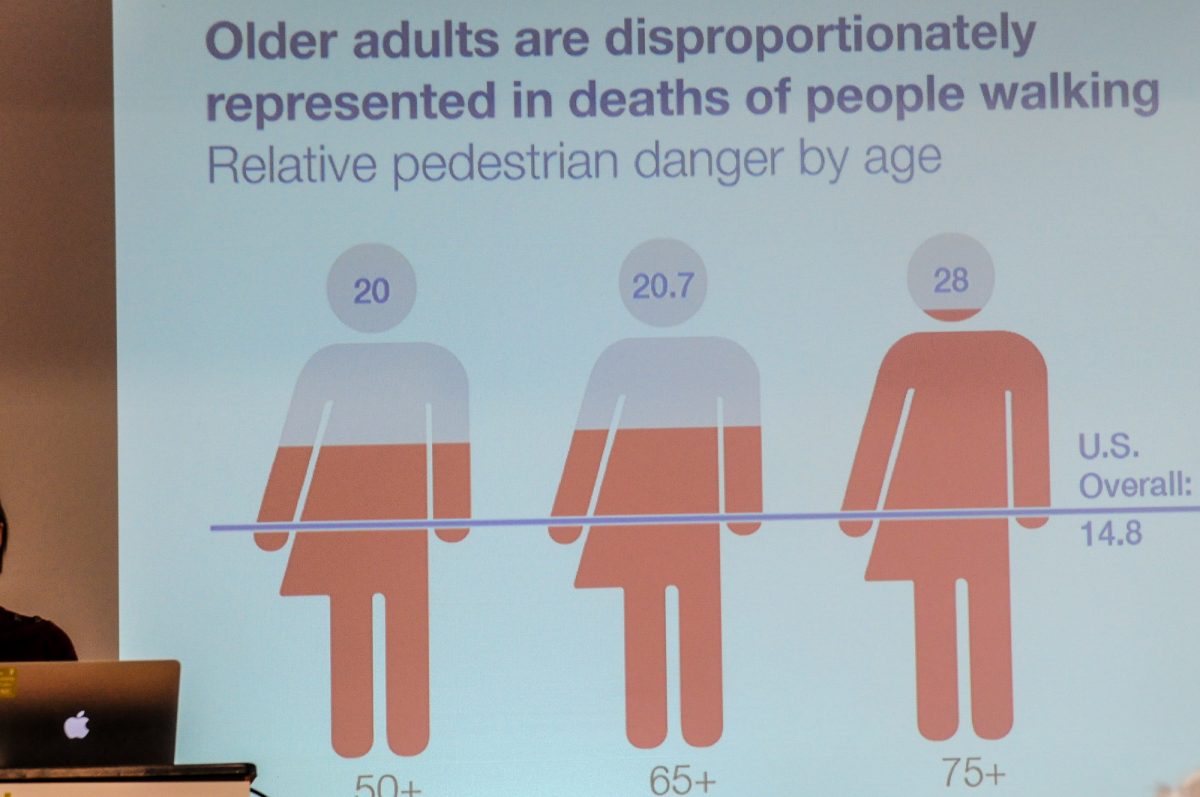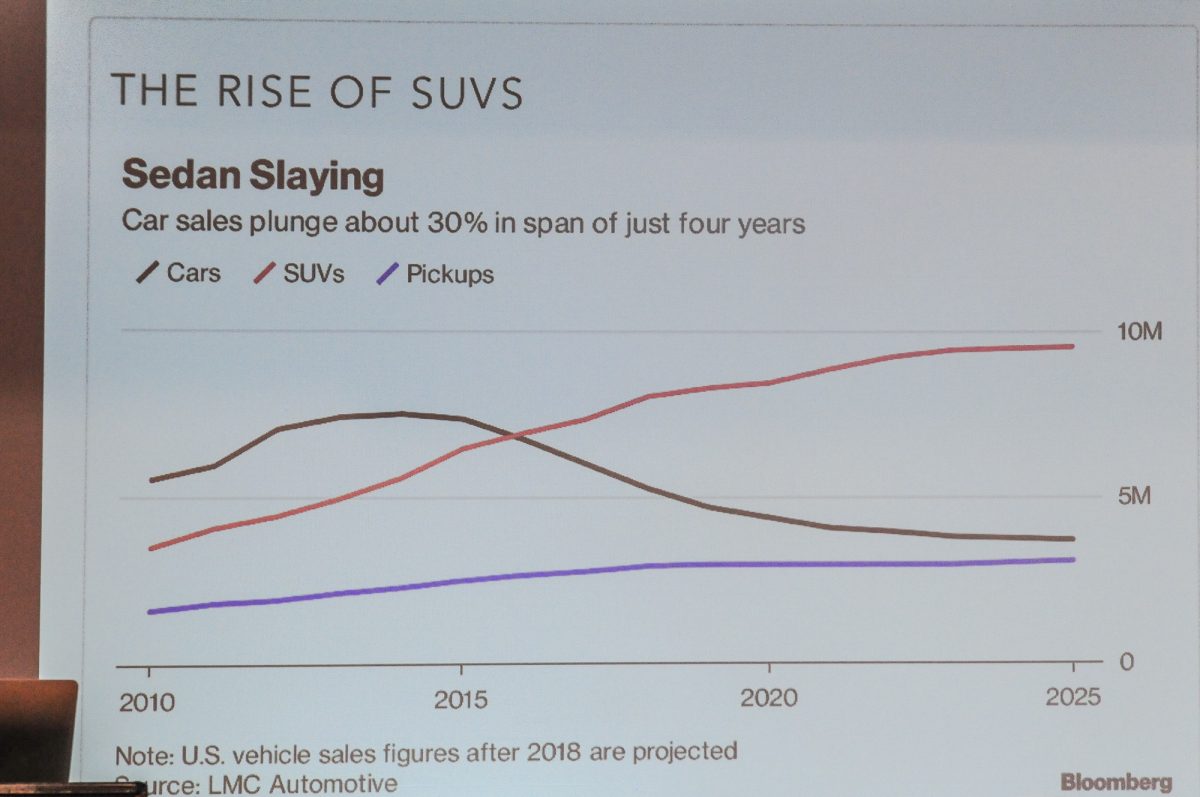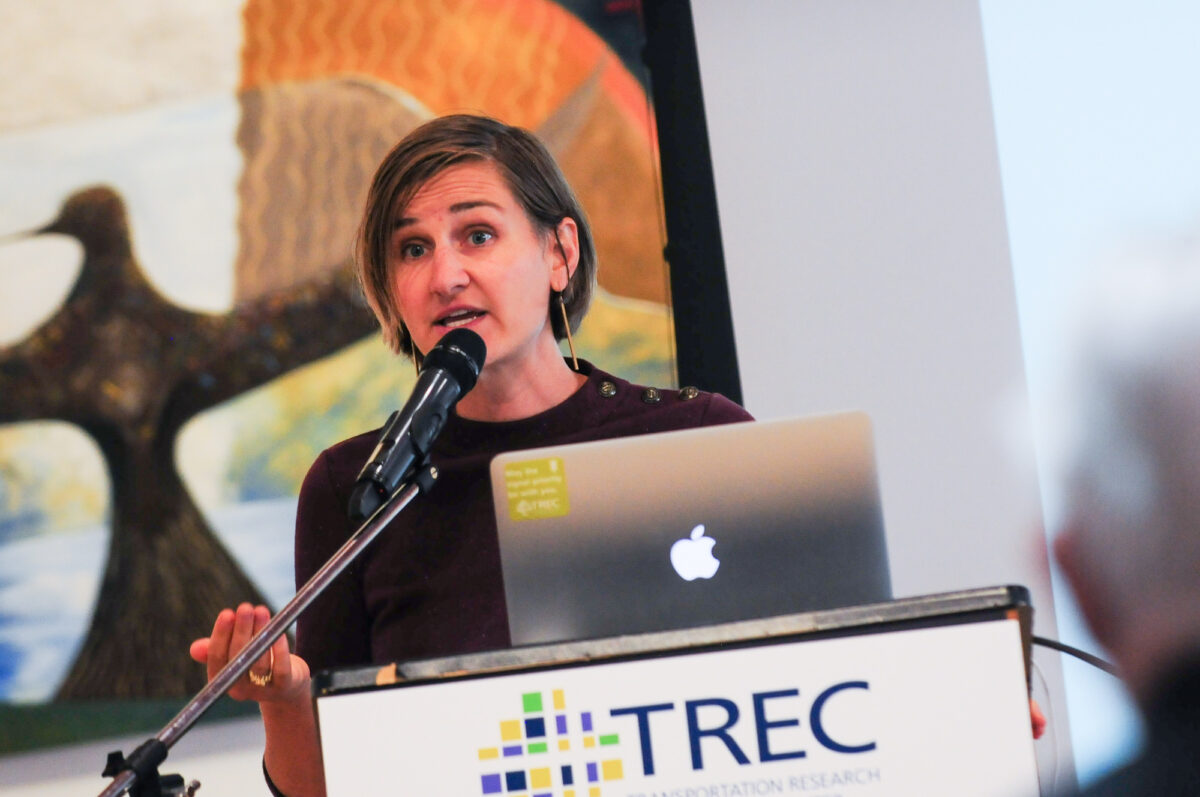
(Photos: J. Maus/BikePortland)
As (former) editor of Streetsblog USA and a prolific user of Twitter, Angie Schmitt has become a leading voice for a problem that plagues cities and towns across America: the skyrocketing rate of people killed while walking. Schmitt, who’s working on a book about the issue due out next year, was invited to speak in Portland by the Transportation Research and Education Center at Portland State University.
At her sold-out lecture yesterday, Schmitt said she believes the increased death toll is due to a combination of factors that are creating a perfect storm. “But if I had to tie it back to one issue,” she added, “I’d say it’s inequality.”

National data shows that the number of walkers killed each year in the U.S. has gone up over 50% and has climbed to a 30-year high from a low of 4,109 people in 2009 to 6,227 people in 2018. Explanations for the uptick tend to focus on distracted driving, “distracted pedestrians”, unsafe road designs, and so on.
Schmitt’s role has been not just to explain the problem, but to point out why it hasn’t been solved yet. Standing in front of a slide that showed a Google Map image of people running across an eight-lane roadway to avoid being hit by drivers, Schmitt said she thinks privilege can explain a lot of it. “A lot of us who are a more privileged are never put in this position, that’s also one of the reasons this issue hasn’t resonated in the press and mainstream American culture the way it should given that 6,000-plus people are being killed every year,” she said, while looking out into a mostly white and relatively wealthy crowd. “We can afford to live in neighborhoods that aren’t like this or we can afford to drive.”




America has a long history of ignoring problems when they impact mostly poor people of color or other marginalized groups. According to Schmitt, the epidemic of traffic deaths to vulnerable people is just another example. She pointed out that black people and Native Americans are are two times and four-and-and-half times more likely to be killed while walking than white people are. Similar risks exist for people over 75 years old, who are twice as likely to die.
Instead of blaming victims because they’d been drinking alcohol or because they live outside adjacent to dangerous streets, Schmitt says we should be doing more to keep these groups of people out of harm’s way. “We know they’re out there, but we’re not doing a good job protecting them.”
Advertisement
“There’s been a suburbanization of poverty, and unfortunately the areas growing fastest are also the most dangerous for pedestrians.”
Systemic racism was also a theme of Schmitt’s talk. She shared examples from Detroit and Cleveland to show how the geography of traffic deaths mirrors historic lines of institutional inequity, racial segregation and income. Then she criticized Portland directly and said she plans to use us as a bad example in her book. “This pattern is really stark in Portland,” she shared. “There’s a big dividing line [in walking deaths] east of 82nd Street, which is also where 28 out of your top 30 high crash intersections are located.”
Demographic shifts are also playing a key role in this problem. Schmitt pointed out the “suburbanization of poverty,” a phenomenon playing out in metro areas and cities across the country. Since people of color tend to use transit more and have lower rates of car ownership, Schmitt said, “As these folks end up in suburbs that were designed without pedestrian safety in mind, that’s another reason I believe we’re seeing this explosion in deaths. Unfortunately, the areas growing fastest are also the most dangerous for pedestrians.”
More people walking on streets designed only for driving is bad enough. The fact that more people than ever are driving larger, more powerful cars is also a big part of the story. The impact of car design is where much of Schmitt’s interest lies. She points to the rise of SUV sales as a leading factor in the fatality increase.

With a photo of her 4-year-old son dwarfed by the grill of a lifted Ford pickup truck, Schmitt pointed out how the height and shape of grills leads to much worse collision outcomes for walkers. Lower, more angled front-ends result in more impacts to the legs and collisions that throw people up onto hoods. With high, square front-ends, not only is visibility worse, but impacts hit major organs and more frequently lead to deaths.
Then there’s culture: “The things going on with Trump and guns and masculinity… These kind of trucks have become more stylish,” she said. There was also a moment during the Q&A session where Schmitt said the “ethics of driving” deserves more attention. “How many of us spend any time thinking of driving in ethical terms,” she asked, “Yet it has these profound ethical consequences.”
Horsepower (another stylish thing for people who worry about their masculinity) is also on the rise. Schmitt pointed out that a 1999 Ford Mustang topped out at 320 HP. The 2019 version of the same car has a whopping 480 HP. And speaking of Trump, Schmitt said former President Barack Obama tried to start a pedestrian safety rating program system for new cars, but under the Trump Administration, “It’s not happening.”
With very little walking-specific advocacy (especially compared to cycling) and a lack of institutional respect from government agencies, Schmitt says the only way to turn the tide is for people to step up. “In the advocacy community, I think we’ve overlooked some important important things,” she said. “I think it would be really helpful if people got more engaged in what’s going on with federal regulation of cars. That’s something that’s been missing from this movement.”
Schmitt is working on a book to be published by Island Press in August 2020. Until then, catch her latest thoughts on Twitter @schmangee.
— Jonathan Maus: (503) 706-8804, @jonathan_maus on Twitter and jonathan@bikeportland.org
— Get our headlines delivered to your inbox.
— Support this independent community media outlet with a one-time contribution or monthly subscription.


